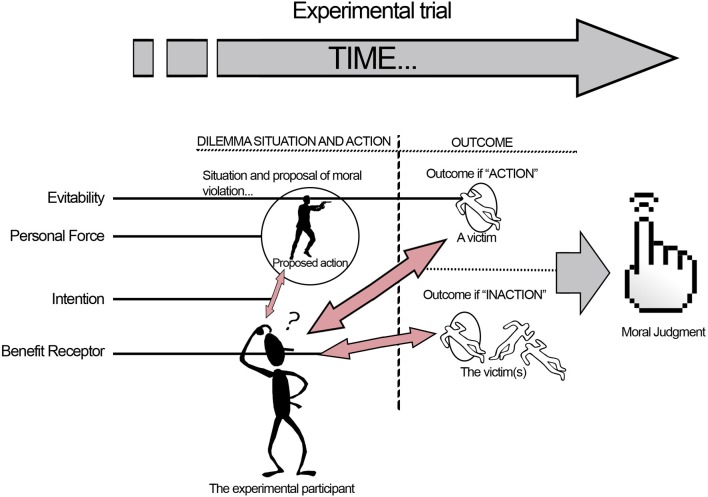Figure 2.
The four factors in the dilemma set, adapted from Christensen and Gomila (2012), reproduced with permission. (1) Personal Force: the kind of imaginary involvement with the situation: Personal, as direct cause, or Impersonal, as an indirect agent in the process of harm. (2) Benefit Recipient: concerns whether the protagonist's life is at stake (Self-Beneficial action), or not (Other-Beneficial action). (3) Evitability: regards whether the victim would die alongside the other individuals in the group if the moral transgression is not carried out (Inevitable death, the person would die anyway), or not (Avoidable death, the person would not die if no action is taken). (4) Intentionality: if the action is carried out intentionally with the explicit aim to kill the person as a means to save others, this is Instrumental harm (it explicitly needs the death of that person to save the others). If the innocent person dies as a non-desired side-effect of the action by some independent mechanism and not directly by the action of the protagonist, the harm is Accidental.

